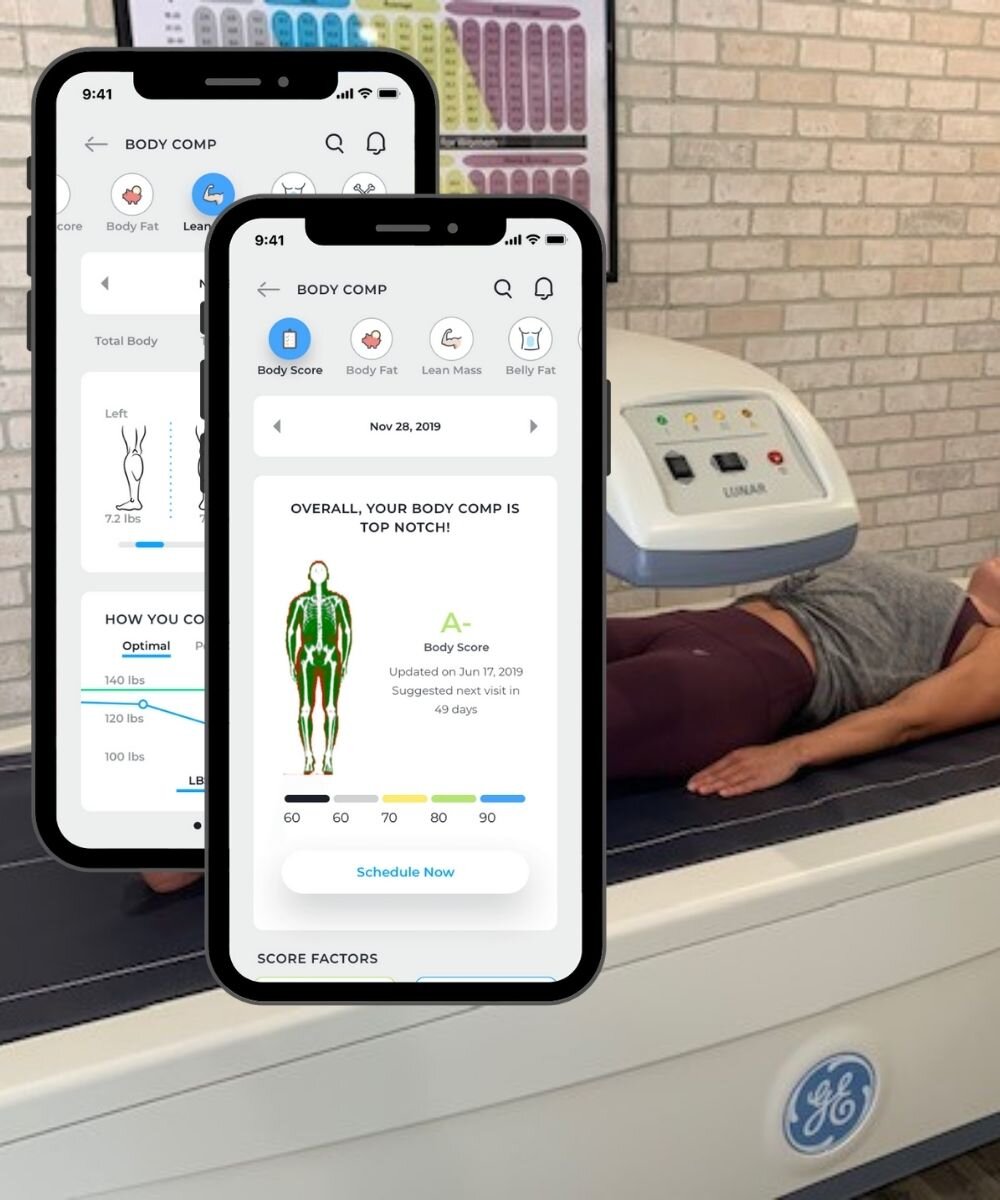DEXA Speaks Louder than Scales
Sure your weight might be changing. But is it fat, muscle, or bone? The DexaFit DEXA scan is the most trusted method you can use to find out.
Sure your weight might be changing. But is it fat, muscle, or bone? The DexaFit DEXA scan is the most trusted method you can use to find out.

Toss aside the calipers, skip the estimates, and forget the tape measure.
Dual-energy absorptiometry (DEXA) is the most accurate method for body composition analysis trusted by research and elite sports labs across the world
It’s simple to do and significantly more precise than other methods (including BMI, InBody, BodPod, and hydrostatic weighing)
DEXA is FDA-approved and quantifies your lean, fat, and bone mass, and visceral fat (correlated to chronic disease and mortality risks)

A DEXA scan provides a clearer understanding of your body composition and skeletal health.
Map and pinpoint your precise muscle gains and fat loss in specific areas of the body
Track your body's specific physiological response to your diet or fitness plan
Discover your bone health and risk for osteoporosis
Identify personal long-term health risks, including diabetes, cardiovascular disease, hormonal imbalances, and more
Common alternative methods, such as BMI, Bioimpedance, Bod Pod, and hydrostatic weighing, are often used incorrectly as a surrogate for body composition health. But they can be dangerously misleading.
For example, if you have a BMI of 25 kg/m2, you may have a body fat percentage anywhere from 10-35 percent. If you use other alternative methods, you may see a margin of error range from 5 to 15%.
Whereas as a DEXA scan’s accuracy and precision ranges from a 1 to 2 percent margin of error, it also provides additional information that BMI and alternative testing methods cannot, including:
Visceral Adipose Tissue (VAT), which is leading predictor of longevity, metabolic syndrome, and cardiovascular disease
Skeletal strength, your risk for osteoporosis, and how you compare to others like you
Muscle symmetry to identify how your lean, fat, and bone mass compares in each region of your body
“Skinny fat” and sarcopenia risks, which has been found to be an important predictor of cognitive performance
Find a DexaFit provider near you to learn how to get started with DexaFit. The scan itself takes 7-12 minutes, and your results are not an estimate.
You can read about how to prepare for your DEXA Scan here, or find the location near you by clicking the button below.